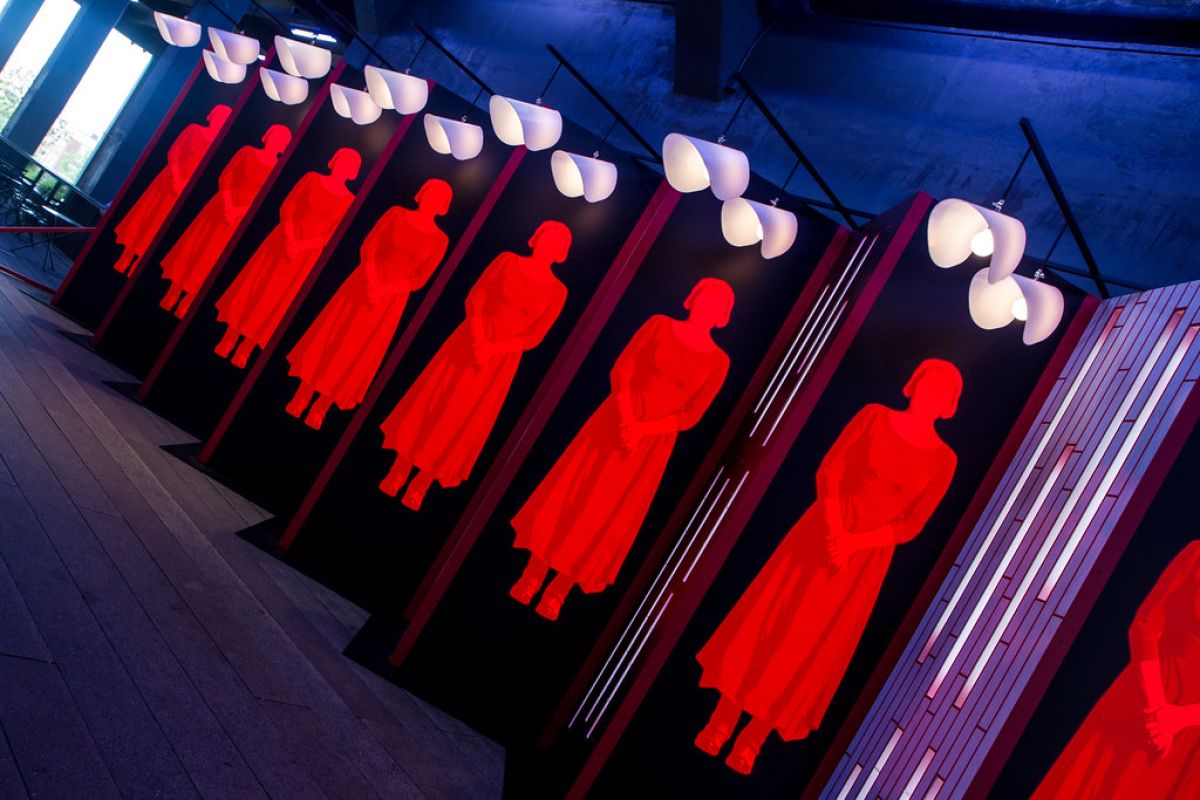The Handmaid’s Tale revisited
By Erin Botten

Since its release in 1985, The Handmaid’s Tale‘s legacy and cultural prominence has continued to soar. In 2017 it was revived as a hugely successful dystopian TV series. With perhaps one of the longest wait times in history, Margaret Atwood published a sequel, The Testaments, 34 years after Gilead’s initial debut. But is The Handmaid’s Tale (both on-screen and in-text) still culturally valid? And is it even worth your time? The short answer: definitely. If you need a quick rundown of The Handmaid’s Tale, click here.
Warning: Spoilers ahead!
To be blunt, I love The Handmaid’s Tale. Atwood doesn’t once drop the ball. Her writing and even her screen portrayal of Gilead will draw you with its eerily slow tense build-ups and well-curated emotive depictions. The language of each diary chapter reflects each women’s age, status, and mindset. June Osborne (aka Offred) is numb but angry, ageing quickly in the new world. In The Testaments, Hannah/Witness 369A matures as the novel progresses, reflecting her constant status changes. Nicole/Witness 369B however talks quickly without thought, frozen in adolescence.
Such use of language is complemented by the show, with the cinematography and music reflecting the constant threat that is Gilead – a brutalist Christian regime built to combat America’s fertility crisis. The same techniques are used in Peaky Blinders, creating a sense of tension. You’re aware that something’s coming, but don’t know what.
That is what life is like in Gilead, the new America in which The Handmaid’s Tale is set. Everyone is watching you, supposedly for the greater good. The Eyes, the Commanders, the Aunts, no one is on your side, not really. To have an ally is a risk, and often paid for in blood.
Each book is set as a diary as we later find in the ‘Historical Notes’ (as a history student, Atwood’s functional historical notes were gorgeous), akin to the war-time writings of Anne Frank. In its prequel, June’s stories are scattered between her past and current circumstances, with memories being cut short out of pain. As a handmaid, her mind is numb, with her face frozen in a scowl.
As the TV show later explores, her loyalties and womanhood are tested between the demands of Gilead, her daughter, and her husband. That’s a frequent theme for every character though and something Gilead relishes – the testing of loyalty. Be it through violent persecutions, the wall, or even the monthly ceremonies – you must conform.
One criticism that arises, again and again, is the pace of Atwood’s writing in this series. Readers complain of the slow pace and sudden endings, with it not being uncommon for Atwood to wrap up her work abruptly in less than a chapter. As a reader, I agree, it’s irritating. You’re so engrossed in the plot and then … oh it’s ended.
However, it’s a very smart move on Atwood’s part. Neither The Handmaid’s Tale nor The Testaments is set up to be an action piece like The Hunger Games. The book presents a time of change, with each character’s life being slow and unnerving. June isn’t running around having a ball, killing every Commander she sees – though that is Season 3-4 of the show. Instead, she’s sat isolated with her thoughts. As readers, we’re a witness to her passivity and boredom. She’s waiting for something to happen purely as an escape, and so are we.
This is what the real world is, especially in a time of war. Every member of Gilead, regardless of rank, is a victim of the environment they inhabit. As we’ve seen countlessly throughout history, war is a pain that is slow and cruel, just like Gilead.
With the publication of The Testaments, Atwood reveals it was current and historical events that inspired the series. When a nation experiences a fertility or population crisis, it is pinned on women to step up and reproduce. Romania and Russia are prominent examples of this practice, monitoring women’s fertility, banning abortion and providing financial incentives for big families. All of these undermine female autonomy, with Atwood stating “Their eventual target is to wipe out the women’s movement.”
The world’s response to Gilead again reflects reality. The totalitarian nation is bombarded with sanctions, whilst the world stands by and watches as refugees attempt to flee. Even handmaid’s gowns and wings are inspired by religious ideology. They represent honour and purity; a servant to the nation and to God.
Overall, Atwood’s ideas aren’t new but rather sewn together delicately to produce Gilead. The Handmaid’s Tale series is a timeless fiction and cultural feminist gold. It’s a hard read, but a good dystopian needs to be. If you’ve seen the TV series you’ll absolutely love The Testaments – I cannot emphasise that enough.
My only criticism? I want to know what happens next in Gilead! I guess I’ll have to keep watching the TV series to find out.







